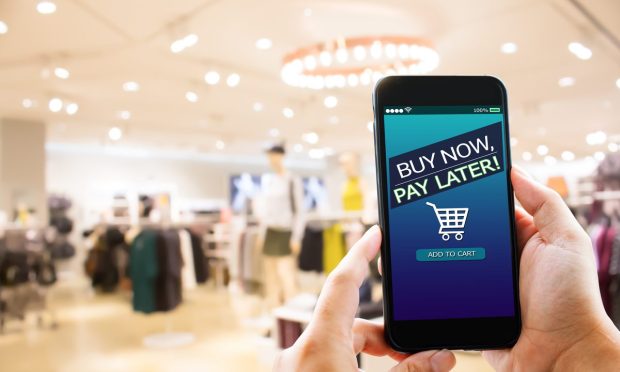Retailers Look to Leverage the ‘Now’ in Buy Now, Pay Later

In retrospect, there are the trends, the seismic shifts in the payments landscape that seem “obvious” and that we might have spotted a mile away.
Think, then, of buy now, pay later: arguably the payments standout of the past year. The underpinnings, the tailwinds, were, and are, staring us right in the face.
After all, with the economic uncertainty that has been a dominant and constant refrain amid the pandemic, with a growing percentage of the U.S. population living paycheck to paycheck — it stands to reason that consumers would embrace a payment method that is tied to the cash they have on hand.
The visibility that installment payments offer towards budget planning and cash flow management have found particular appeal with consumers wary about, or even unable to access, traditional credit.
To that end, we might point toward a few of the headline deals, in the billions of dollars, that have marked the desire of payments giants to gain a further foothold in the space. During the summer, Square struck a $28 billion deal to buy Afterpay, based in Australia. Affirm bought Paybright. Stripe bought Paystack.
You get the idea: The Stripes and the PayPals of the world, once payments upstarts, are now buying the upstarts.
We’ll get more sense of how BNPL might have been viewed, and used, for holiday purchases in the coming weeks.
But as PYMNTS’ data has shown, the increasing readiness of payments providers to offer the option has led to strong, double-digit growth headed right into the season, so there seems no reason to think that growth is not teeing up to keep surging into the new year.
To get a sense of how popular BNPL has been, PYMNTS found that 29 million Americans have used BNPL for at least one transaction in the past year. Roughly a quarter of consumers making between $50,000 to $100,000 annually are cut off from traditional avenues of credit, and 73% of “second chance” consumers who have or would use BNPL would be more inclined to shop at a merchant that offered that payment choice. These second chance consumers are desirable, as 65 percent earn more than $50,000 per year, with 30 percent earning above $100,000.
Think the would-be or current BNPL consumer is a credit risk? You might think again. The average second-chance consumer is 44 years old and has a FICO score of 662, or only 38 points less than the average ‘good’ credit score, the data show.
Read Also: Study Confirms Love Match Between BNPL and ‘Second-Chance Consumers’
The value inherent in BNPL is that significant numbers of users find that spreading out payments over time allows them to manage their monthly expenses and avoid fees. In other words, there’s visibility inherent in the model.
There are signs that traditional lending, as an industry, is taking notice of BNPL. In late December, credit reporting agency Equifax is putting a plan in place next year to add buy now, pay later (BNPL) plans to credit reports.
The year has ended with a bit of turbulence for BNPL, chiefly in the form of regulatory scrutiny. The Consumer Financial Protection Bureau (CFPB) is now inquiring into issuance, refund and fee policies of buy now, pay later (BNPL) brands. There are indications that the first quarter may be a bit bumpy.
The December 16-page order from the CFPB states that “The Bureau is monitoring Buy Now, Pay Later (BNPL) products and consumer usage of these products. This Order will provide information necessary to conduct such analysis in compliance with Congress’ mandate that the Bureau monitor for risks to consumers in the offering or provision of consumer financial products or services, including developments in markets for such products or services.” Affirm, Afterpay, Klarna, PayPal and Zip — have until March 1, 2022, to respond.
Read Here: CFPB Works With Global Regulators to Target BNPL
